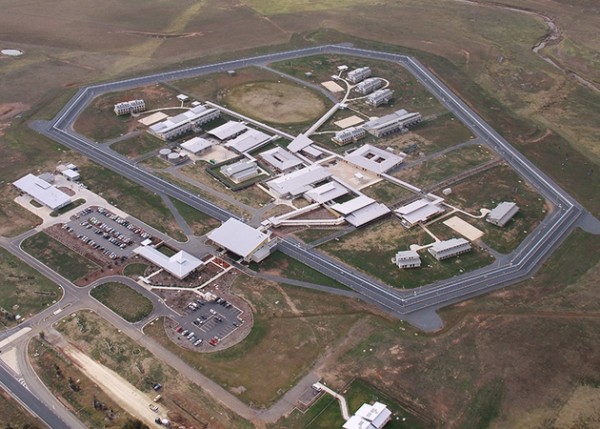
Seventy-five per cent of the ACT’s prisoners are repeat offenders.
Three-quarters of the ACT’s prisoners are repeat offenders, with the Territory having the largest proportion of prisoners who have previously been imprisoned of any state or territory according to the latest figures from the Australian Bureau of Statistics.
The statistics for June 30, 2017, also reveal that the ACT has the highest proportion of unsentenced prisoners of all states and territories, at 39 per cent.
There were 449 adult prisoners in the ACT in June 2017, an increase of two per cent from the previous year.
The median prisoner age was 39 and most prisoners (91 per cent) were men, although the percentage of women had increased.
The most common offence was ‘acts intended to cause injury’ at 27 per cent (120 prisoners) followed by sexual assault at 12 per cent (55 prisoners).
A total of 337 prisoners – or 75 per cent of the ACT’s adult prison population – had previously been imprisoned under sentence. This compares to the national average of 57 per cent.
The ACT’s high rate of re-offenders contrasts with the NSW rate of 52 per cent and is out of step with the stated aims of the Alexander Maconochie Centre to be a place which “emphasises rehabilitation”.

The Alexander Maconochie Centre. File photo.
The Northern Territory had the second highest rate after the ACT, with 72 per cent of prisoners having previously been imprisoned under sentence.
An ACT Government spokesperson told The RiotACT that standard recidivism measures provide a basic tool for measuring what is typically a complex issue.
“The ACT’s low rates of imprisonment (the lowest after Tasmania) means that offenders who receive custodial sentences typically have more endemic offending behaviours,” the spokesperson said.
“Understanding the drivers behind offending and reoffending behaviours is important. Factors including changes to sentencing legislation, police operations, and court sentencing practices can impact on recidivism reporting.”
Commitment to reduce recidivism by 25 per cent by 2025
The spokesperson said that the Government is committed to reducing recidivism by 25 per cent by 2025 and to supporting detainees to successfully re-integrate into the community.
“ACT Corrective Services is developing a Rehabilitation Framework to address offending behaviour and work with detainees to better reintegrate into the community following their imprisonment,” the Government spokesperson said.
“The Extended ThroughCare program also provides assistance for eligible detainees exiting custody to help them reintegrate into the community.”
According to the spokesperson, the definition of ‘prior imprisonment’ for the purposes of the ABS publication is anyone under sentence as at 30 June that is known to have been previously imprisoned in an adult prison.
“Periodic detention is included as prior imprisonment. Prisoners who have had previous adult imprisonment in another state or territory may not be counted as having prior imprisonment as they would need to self-identify.
“This definition differs from the recidivism counting rule applied in the Productivity Commission’s Report on Government Services, which indicates whether detainees released in a particular year have returned to custody under sentence within a two year period.
“Imprisonment rates or the number of detainees entering the custodial environment are caused by many factors – unfortunately, there is no one simple solution.”
Median time of 2.7 months on remand
There were 174 unsentenced prisoners (39 per cent) in the ACT on June 2017, with the median time spent on remand by unsentenced prisoners being 2.7 months.
Aboriginal and Torres Strait Islanders comprised 21 per cent (95 prisoners) of the ACT’s adult prisoner population.
“According to the ABS data, Aboriginal and Torres Strait Islander imprisonment rates have increased in every jurisdiction except the ACT and the Northern Territory,” the Government spokesperson said.
Australia’s prison numbers increase six years in a row
The ABS reports that the total number of people in prisons throughout Australia has increased for the sixth consecutive year, with 41,202 prisoners on the night of June 30, 2017.
This represents a six per cent increase from June 30, 2016 and a 51 per cent increase from June 30, 2007.
ABS Director of the National Centre of Crime and Justice Statistics, William Milne said that the increase in the Australian prisoner population over the year was due to the rise in prisoners with offences of acts intended to cause injury and illicit drug offences.
NSW continued to have the largest number of prisoners of all states and territories, accounting for 32 per cent of the national prisoner population. Queensland has the second largest (21 per cent), while the ACT and Tasmania have the lowest proportions, each with one per cent of total prisoners.
Are you concerned about the number of repeat offenders in the ACT? Let us know your thoughts in the comments below.





















